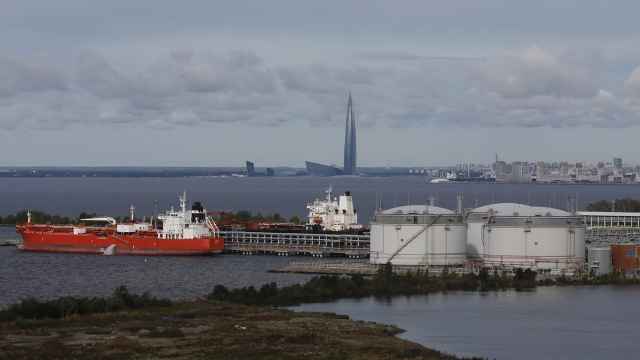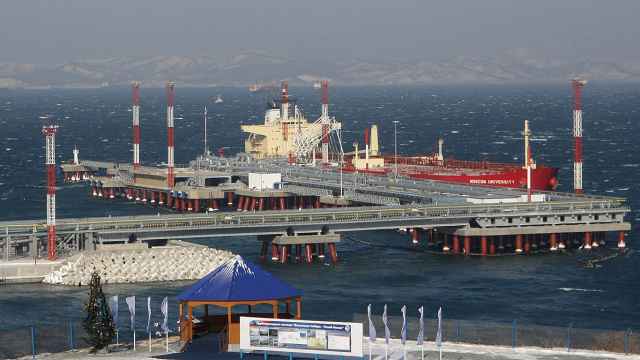The United States’ first sanctions on Russia since Donald Trump’s return to the White House have targeted the country’s two largest oil producers in a move that could ripple through global energy markets.
The measures give the U.S. sweeping authority to pressure Rosneft and Lukoil’s overseas subsidiaries and discourage foreign partners from doing business with them.
Trump has repeatedly called for curbing Russian oil exports to China and India, Moscow’s two largest buyers, to tighten financial pressure on the Kremlin and gain leverage in potential talks over the war in Ukraine.
Here is what we know about the impact these sanctions will have:
What will happen to Russia’s overseas energy assets?
The sanctions create new hurdles for Russia’s overseas energy projects and could disrupt foreign trade.
Lukoil said on Monday it plans to sell its international assets, which make up roughly one-third of its operations, in response to the measures.
Its largest foreign venture is a 75% stake in Iraq’s West Qurna-2 oilfield. The company also holds minority stakes in gas-condensate projects in Kazakhstan and Azerbaijan, and fully owns refineries in Bulgaria and Romania.
Rosneft’s main foreign asset is a 49% stake in India’s Nayara Energy, which operates the Vadinar refinery — the country’s third largest, accounting for about 8% of national refining capacity. The company has not said what will happen to this holding.

Because both firms hold minority stakes in many of their foreign projects, the ventures themselves could avoid direct sanctions, said Sergei Vakulenko, a former Russian oil executive and senior fellow at the Carnegie Endowment for International Peace.
However, the sanctions could make it “practically impossible” to pay dividends to the sanctioned companies, Vakulenko said. They could also complicate dealings with suppliers, banks and other partners.
What about Russia’s oil trade?
India’s imports of Russian crude have soared from just 50,000 barrels per day in 2020 to about 1.8 million barrels per day in the first half of 2025, second only to China’s 2 million barrels per day.
Earlier this year, Trump imposed a 25% tariff on India’s purchases of Russian oil and suggested New Delhi would need to scale back these imports.
Although Trump’s sanctions on Rosneft and Lukoil do not take effect until Nov. 21, India’s largest private refiner, Reliance Industries, has already said it will “adapt refinery operations to meet compliance requirements.”
Many other Indian refiners have paused imports pending further guidance, Reuters reported.
Nayara Energy, whose largest shareholder is Rosneft, has so far declined to comment.
India’s position is particularly vulnerable because alternative payment routes are limited if Washington blocks dollar- and dirham-based transactions, said Alexei Gromov of the Moscow-based Energy and Finance Institute.
Moscow has long complained that Indian rupees are not freely convertible, making local-currency settlements impractical. At the same time, trade between the two countries is too small and undiversified to sustain a full barter system like Russia’s reported arrangements with China.
Will India change course?
Analysts expect India to reduce imports of Russian crude under U.S. pressure but refrain from completely stopping them.
Technically, India could replace Russian oil with barrels from the Middle East, Latin America or the U.S., said Kpler analyst Sumit Ritolia. OPEC members are estimated to hold more than 3 million barrels per day of spare capacity that could help fill any gap.
Whether India is willing to give up discounted Russian oil is another question.
In September, Russia’s Urals blend traded at about a $5-per-barrel discount to Brent, though reports suggest India’s effective discount narrowed to $2-2.50 in October. Replacing those volumes with market-priced oil could increase India’s annual import costs by $1.5 billion to $3 billion.
“To pressure India effectively, Washington must not only keep offering alternative supplies but also make clear that its latest sanctions carry a genuine secondary sanctions threat,” said Maximilian Hess, founder of Enmetena Advisory and a fellow at the Foreign Policy Research Institute.
The U.S. could target Russian assets in India by joining European sanctions on the Vadinar refinery, he added.
Ritolia said he expects a “token reduction” of 100,000-200,000 barrels per day by India to signal diversification.
Carnegie’s Vakulenko said India is likely to trim volumes rather than walk away entirely, especially given the administrative challenges facing the Trump administration amid the U.S. government shutdown that could complicate enforcement.
What does this mean for the Russian economy?
Rosneft pumps about 5.2 million barrels of oil per day — roughly 40% of Russia’s total output — while Lukoil produces around 1.6 million barrels.
Following the sanctions announcement, shares in Lukoil fell from 6,000 rubles on Oct. 22 to around 5,434 rubles on Monday, a decline of about 9.4%. Rosneft shares dropped about 7% over the same period, from 402 rubles to 374 rubles.
Now, if India cuts back, Russia could face a revenue shortfall that forces the Kremlin to raise taxes or slash spending to balance the 2026 budget.
China could absorb some of the surplus, but it is unclear whether it can take all of it, Hess said.
There is a precedent for this. When India reduced purchases in August, Chinese refiners took about 15 additional cargoes of Russian crude for October-November delivery, according to Reuters.
Still, sustained U.S. pressure could force Moscow to offer deeper discounts up to 20-25% below Brent or pay intermediaries more, eroding long-term export revenues, Grigory Sosnovsky, director of the Moscow-based N1Broker firm, told the RBC news website.
If demand fails to pick up elsewhere, Russia may have to curb production due to limited storage capacity, Carnegie expert Vakulenko warned.
A prolonged drop in export flows without a commensurate rise in prices would make executing the 2026 budget increasingly difficult, he added.
Russia’s oil and gas revenues are projected to total 8.7 trillion rubles ($91.6 billion) this year, the lowest since 2020.
The draft 2026 budget forecasts a modest recovery to 8.9 trillion rubles ($93.7 billion), with total federal revenues rising to 40.3 trillion rubles ($424 billion) from 36.5 trillion rubles ($384 billion) in 2025.
Energy revenues account for about a quarter of total budget income, but any fall in oil earnings could ripple through the wider economy, weighing on corporate tax and VAT receipts — Russia’s main non-energy revenue sources, Vakulenko said.
A Message from The Moscow Times:
Dear readers,
We are facing unprecedented challenges. Russia's Prosecutor General's Office has designated The Moscow Times as an "undesirable" organization, criminalizing our work and putting our staff at risk of prosecution. This follows our earlier unjust labeling as a "foreign agent."
These actions are direct attempts to silence independent journalism in Russia. The authorities claim our work "discredits the decisions of the Russian leadership." We see things differently: we strive to provide accurate, unbiased reporting on Russia.
We, the journalists of The Moscow Times, refuse to be silenced. But to continue our work, we need your help.
Your support, no matter how small, makes a world of difference. If you can, please support us monthly starting from just $2. It's quick to set up, and every contribution makes a significant impact.
By supporting The Moscow Times, you're defending open, independent journalism in the face of repression. Thank you for standing with us.
Remind me later.







